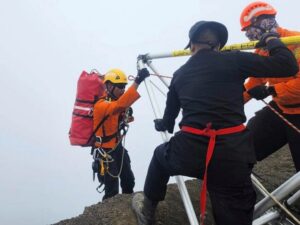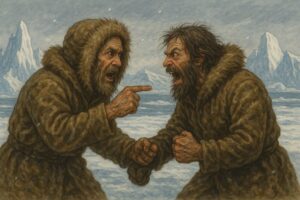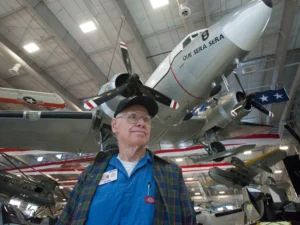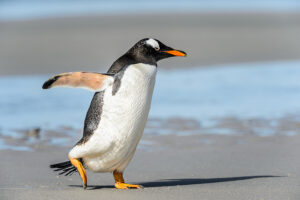While teams line up on Vinson to tick off the Antarctica stage of the Seven Summits, a lonelier, more remote summit challenges adventurous alpinists: Mount Sidley. At 4,285m, it’s the highest peak of the Executive Committee Range in Marie Byrd Land. It is also the highest volcano in Antarctica, which makes it one of the Volcanic Seven Summits. A two-man team from Poland is on its way up the unusual peak.
Getting there and dealing with the weather is more challenging than the actual climb. It is a cold but easy hike to the rim. As Damien Gildea points out in his book, Mountaineering in Antarctica: Climbing in the Frozen South, all the mountains at the Executive Committee Range “rise gently above the plateau.”

Marie Byrd Land and the Executive Committee range lie in extreme Western Antarctica on this British Antarctic Survey map. Photo: Ryszard Pawlowski/Facebook
“Sidley is now guided fairly regularly by ALE [Antarctic Logistics & Expeditions],” Gildea said. “Its value is that of the highest volcano on the continent…It’s a very easy climb, just very remote, so it requires a long extra flight.”
For those interested in geology and the wide Antarctic landscapes, it provides an exceptional experience. Sidley is a shield volcano (like Mauna Loa in Hawaii) — a low, wide bump on the ground like a massive shield. Climbing involves not only reaching the rim of the five-kilometer-wide caldera but finding the highest point, Gildea told ExplorersWeb.

Final steps to the summit of Mount Sidley.
Poles on the go
ALE’s website doesn’t list a specific date for a guided expedition to Mt. Sidley this season, but Polish mountain guide Ryszard Pawlowski and Tom Bryl are currently on their way there. They flew earlier this week from Punta Arenas to Union Glacier. Here, another flight will bring them to the base of the mountain. The climbers will set one high camp on the way to the summit.
Sidley was ignored until very recently because of its remoteness. Those aiming for the highest peak on the continent go to Vinson, while those interested in Antarctic volcanoes would opt for Erebus. Erebus is Antarctica’s second-highest volcano, but it is much more accessible from nearby U.S. and New Zealand bases.
The first recorded ascent of Mt. Sidley was by Bill Atkinson of New Zealand on Jan. 11, 1990. Atkinson was not a member of a climbing expedition, but in a scientific field party launched by the U.S. Antarctic Program, according to Wikipedia.

Pawlowski, right, and Bryl. Photo: Ryszard Pawlowsk/Facebook
The first Vinson
Mt Sidley was discovered from the air by Richard E. Byrd on an airplane flight in 1934. Other pilots of the era mistook it for the highest peak in Antarctica and even called it Vinson. The first expedition to reach the place overland, which included Bill Chapman and George Doumani in 1957-58, discovered the error.
They went up pretty high up the peak with tracked vehicles and then on foot. Although they didn’t summit Sidley, they reached the top of some lesser mountains of the range. They proved that the supposed Vinson was actually Mt. Sidley and that the early maps had misplaced the entire Executive Committee Range by 60km.
The real Vinson — the true highest peak of Antarctica, in the Sentinel Range of the Ellsworth Mountains — was discovered and named after a U.S. congressman in 1958.

Aerial view of Mt. Sidley’s caldera. Photo: Wikipedia
The Volcanic Seven Summits
The Volcanic Seven Summits challenge consists of climbing the highest volcano on each of the seven continents. It shares Elbrus and Kilimanjaro with the standard Seven Summits but then includes Orizaba (5,610m) in Mexico, for North America; Ojos del Salado (6,893 m) on the border between Chile and Argentina, for South America.; Giluwe (4,509m) in Papua New Guinea for Australasia/Oceania; Damavand (5,761m) in Iran, for Asia and Mt. Sidley (4,285m) for Antarctica.





